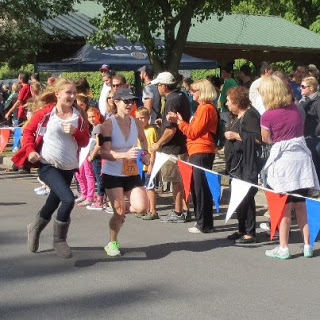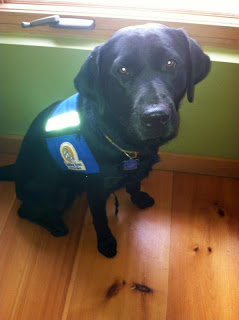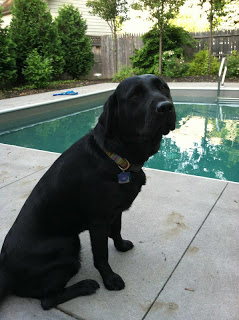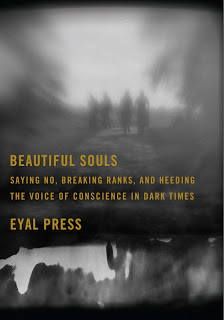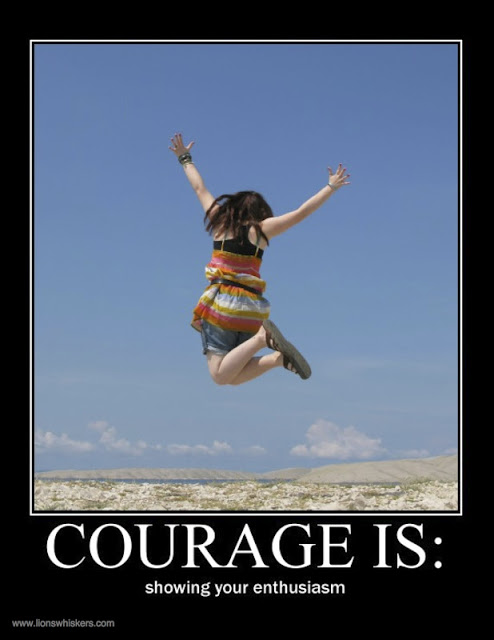 One of my former coworkers has a beloved coffee mug that reads: “Life is all about how you handle Plan B.” Before starting this blog about how to nurture courage in our children and ourselves as parents, I had honestly never thought about how important it is to frame some of life’s unexpected and challenging circumstances as “Plan B” to help boost our capacity for the six types of courage. It now strikes me that much of human courage, and a truer measure of our success in life, has to do with how we handle adapting, often in a singular moment, to the unexpected and challenging circumstances of our individual lives. In terms of parenting, since my kids were young I have had lots of conversations with them about differentiating life’s “big stuff” (i.e. life-threatening illness) from the “small stuff” (i.e. not getting to push the elevator button). When my son was about five years old, after one such conversation when he was upset about a playdate cancellation, he proclaimed: “You know Mommy, if you reeeeaaaalllly think about it the big stuff can just be smashed apart to make smaller stuff. It’s all just small stuff!!” (You can read about Jennifer’s perspective on “Plan B” by clicking here. You can also read more about cognitive reframing in one of my former posts A Hurricane is Coming.)
One of my former coworkers has a beloved coffee mug that reads: “Life is all about how you handle Plan B.” Before starting this blog about how to nurture courage in our children and ourselves as parents, I had honestly never thought about how important it is to frame some of life’s unexpected and challenging circumstances as “Plan B” to help boost our capacity for the six types of courage. It now strikes me that much of human courage, and a truer measure of our success in life, has to do with how we handle adapting, often in a singular moment, to the unexpected and challenging circumstances of our individual lives. In terms of parenting, since my kids were young I have had lots of conversations with them about differentiating life’s “big stuff” (i.e. life-threatening illness) from the “small stuff” (i.e. not getting to push the elevator button). When my son was about five years old, after one such conversation when he was upset about a playdate cancellation, he proclaimed: “You know Mommy, if you reeeeaaaalllly think about it the big stuff can just be smashed apart to make smaller stuff. It’s all just small stuff!!” (You can read about Jennifer’s perspective on “Plan B” by clicking here. You can also read more about cognitive reframing in one of my former posts A Hurricane is Coming.)
Well, it didn’t take long for me to decide that I would lace up my sneakers and still run the marathon as scheduled–it would just have to be around my hometown instead. I figured I had done all my training and had collected some $3,000 in charitable donations for the Alzheimer’s Association in honor of my mother and uncle. I had all my gear ready. I was good to go!
Next, I cancelled my hotel reservation and diverted the refund to the Red Cross Relief fund for Hurricane Sandy. I wrote an email to all my sponsors who had so generously donated funds notifying them that I keep good on my promises. Not one of them asked for a refund! Instead, I received a flurry of supportive emails that strengthened my resolve to run. My husband and I then planned and drove a few possible 26.2 miler routes starting from our house. Some more hilly than others, through battlefields my ancestors had once fought on. I’m a little superstitious and also a big believer that everything happens for a reason; I figured running close to home on the same day, starting at the same time, from my own front porch instead of from the Hudson River’s edge on Staten Island, was what was meant to be. It always feels right and good when I’m living in the flow.
When I called my uncle to inform him that I was still going ahead with my run on my own, to honor his courage in facing down Alzheimer’s, his response: “Well, how like you. This means you’ll win the race, of course!”
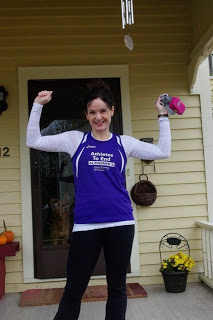 |
| Starting out! |
I carried all the names of the family members my sponsors had honored through their donations. I read it out to myself and sent prayers for each of them at 13.1 miles and again towards the end of my run–when I really needed their strength and inspiration. I thought of the families struggling to recover and repair their lives after Hurricane Sandy, especially the mom from Staten Island whose two young children were torn from her arms by a giant wave and both of whom tragically died. A loss which I can only imagine must take the most courage any of us as parents can muster.
I reflected on how truly grateful I am to be healthy enough to run on behalf of such important causes. I also thought, “Girl, if you can give birth twice, you can do this!”
Around mile 16, I felt the presence of other runners coming up behind me. Being Canadian, I promptly apologized for hogging the narrow slip of road we were needing to share along my route, only to turn around and find two twin guardian angels—my son’s ex-girlfriend and her twin. They told me not to talk, good advice, and to just keep running. Not long after my mind went to an altered state and I just kept saying to myself “Just keep running, just keep running.” No deep insights. But maybe that’s enough: just to keep moving, putting one foot in front of the other, staying VERY present, especially when you have to dig deep during tough times.
I had always minimized the legendary “Wall” that every marathoner talks about, around miles 20-24. That is until “The Wall” found me at mile 22. It became too much to take a drink, stomach any energy “goo,” and it became very evident that I was going to have to draw on something much stronger than myself to finish this particular race. Most marathoners would agree that at this stage of a 26.2 miler, the balance tips in favor or mind over matter. I kept counting down the blocks and kept with my plan to run and not stop—no matter what! At that point, if I had stopped I figured I would lose all momentum and fall face-first onto the pavement. I was really concerned about honoring my commitment to my sponsors. Everything became very simple. Just breath, just keep putting one foot in front of the other, and push just that little bit further than I think I can: the essence of physical courage. The type of courage that Jennifer’s friend Jane, a former professional ballerina, talks about in this post: Dancing Through Pain.
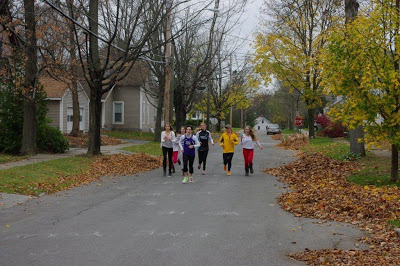 |
| Almost across the finish line |
A few blocks from home, I could hear a chorus of girls singing “She’ll be coming around the block, when she comes…” Total relief! One final hill and I’d be home. I did my best, hunched over at this point, to challenge that hill, and was met at the top by my daughter and a group of her good friends. One of whom I overheard saying, “Your mom seriously looks like she’s going to die.” Then followed a series of inspirational chalk sayings along our block, with my husband and son holding a make-shift finish line, fashioned from some spare rope from our garage, for me to cross some 4 hrs. and 25 mins. later—first, of course, as predicted! My twin angels clearly gracious enough to let me win this one!
My learning? In a nutshell:
• Disappointment gets in the way of decoding Plan B.
• Grace is accepting what happens as meant to be.
• Never underestimate good running shoes, hydrating, and regular re-fueling.
• Don’t believe every thought that pops into your head—especially those at mile 22 that start “I can’t…”
• Everyone needs a loyal pit crew. Treat them well! Give thanks!
• Stretching and being flexible can’t be underestimated, especially after 40.
• What we think is the big stuff can actually be broken into smaller, more manageable, stuff—especially when we focus on what’s truly important in life. Which, in my opinion, is to love and be loved. It takes all six types of courage to live this value!
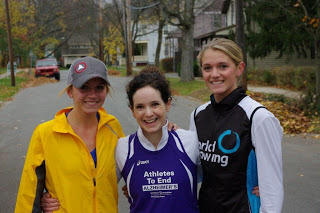 |
| Across the finish line with my twin guardian angels! |



